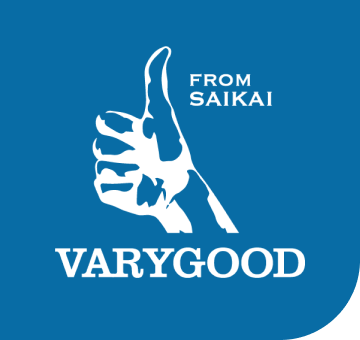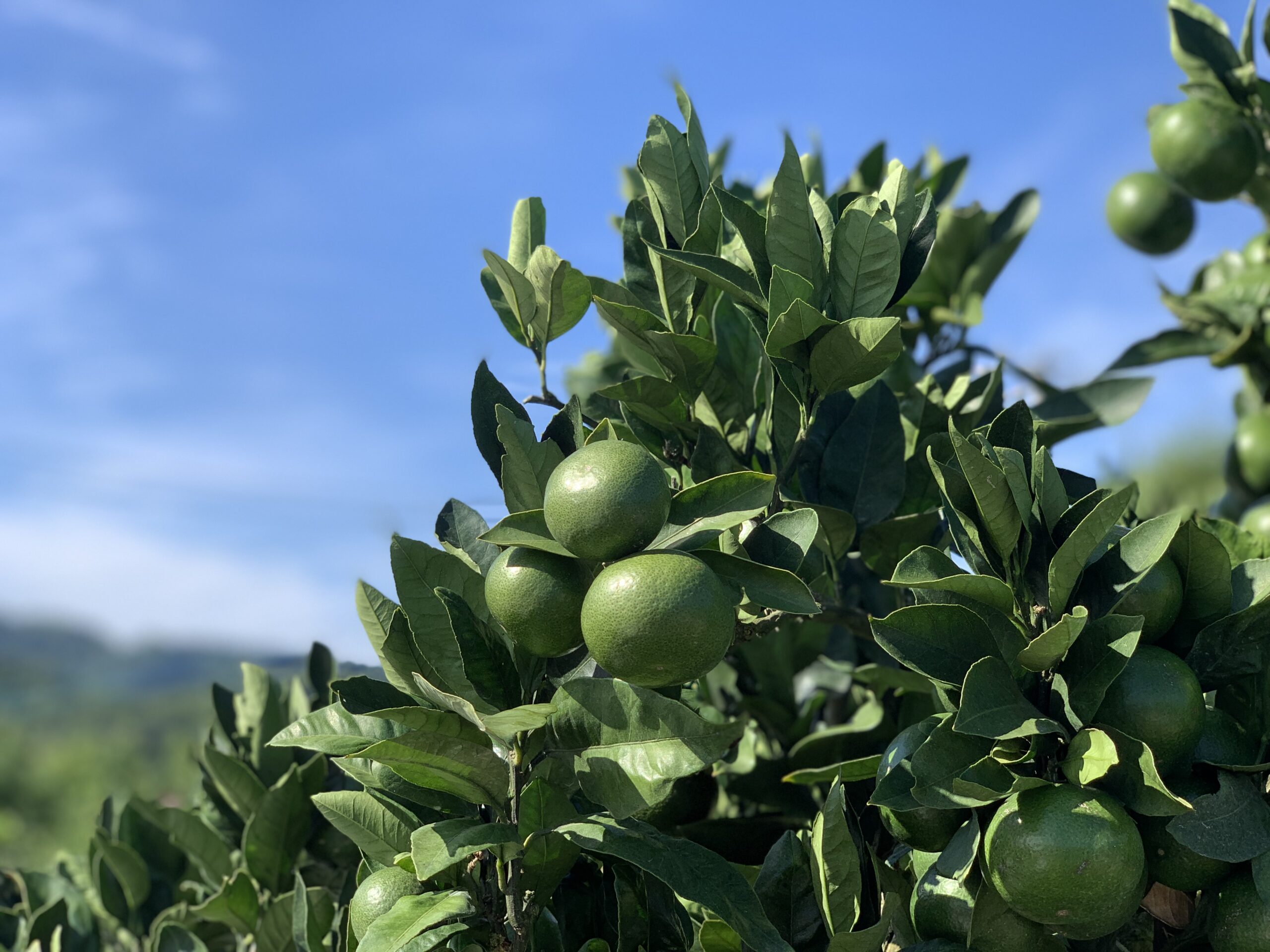Hello everyone, this is the BARIGUDDO editorial board.
The mornings and evenings have become much more comfortable. However, it is still incredibly hot during the daytime. When you are outdoors, be sure to take precautions against heat stroke.
In the midst of such heat, we visited the farm of Mr. Nakazato, a mandarin orange farmer in Saikai Town, to observe the work as he was going to mulch the oranges, a typical specialty of Saikai City.
It’s a summer tradition,” Nakazato said, laughing, “but it’s a lot harder work than I thought it would be.
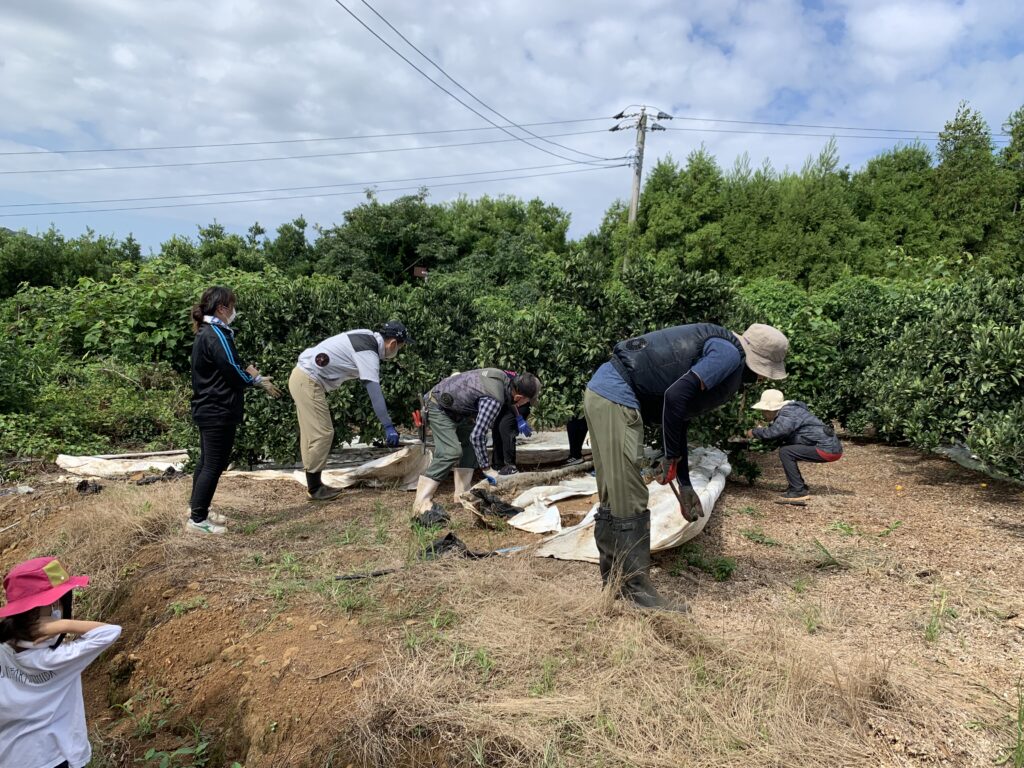
What is mulching oranges anyway? What is it for? I will introduce them as well.
Contents
About Saikai City Mandarin Oranges
First of all, I would like to talk a little about oranges produced in Saikai City.
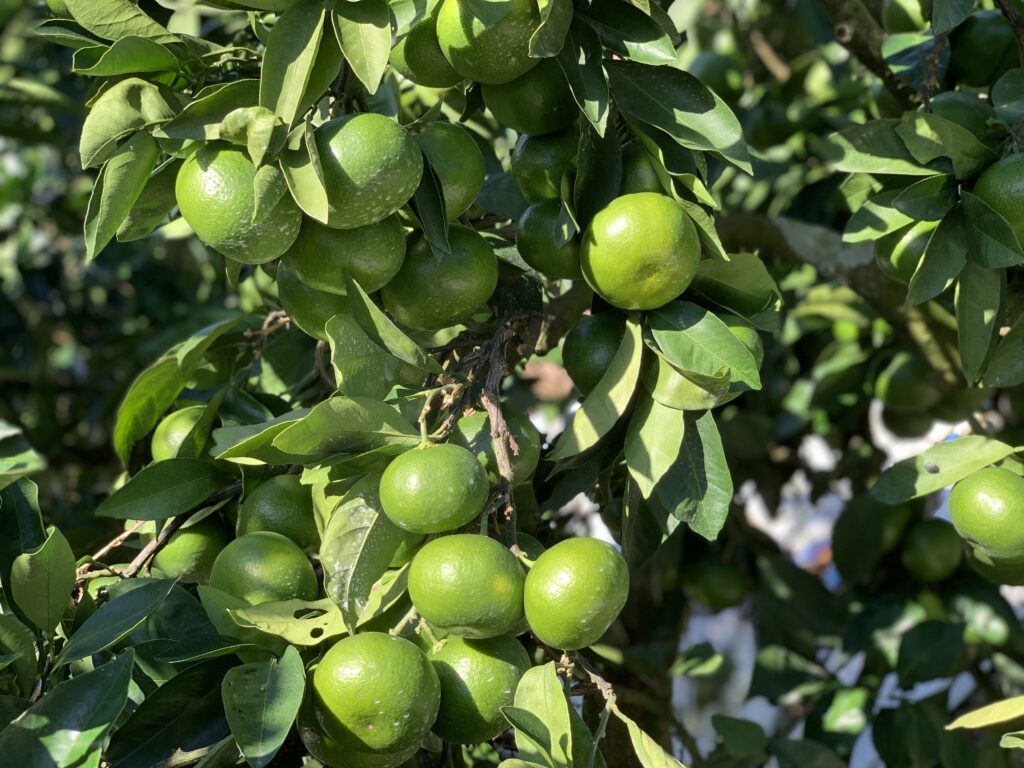
As many of you may know, Nagasaki Prefecture is one of the leading mandarin producing areas in Japan, and among them, mandarins produced in Saikai City are highly evaluated nationwide. What is especially appreciated is their “deliciousness. The oranges have a good balance of sweetness and sourness, and are very tasty.
So, why does Saikai City produce delicious oranges?
There are several reasons why the oranges of Saikai City are so delicious.
Warm climate and long hours of sunshine throughout the year
Minerals and calcium are carried by the sea breeze.
The soil is suitable for growing mandarin oranges.
Thorough mulch cultivation
While climate and climate factors play a large part, it is also said that the thorough use of mulch cultivation has a very large impact.
What is mulch cultivation? What is it for?
What is “mulch cultivation” anyway?
Mulch cultivation” in mandarin oranges refers to a cultivation method in which a special mulch sheet (white moisture-permeable waterproof sheet) is spread over the entire mandarin oranges’ orchard to regulate the supply of moisture to the trees, and the white mulch sheet reflects sunlight to spread light to the entire area.
The aim is to increase the sugar content of oranges by not providing excess water, and to promote photosynthesis by exposing the entire fruit to light, which also ensures uniform coloration.
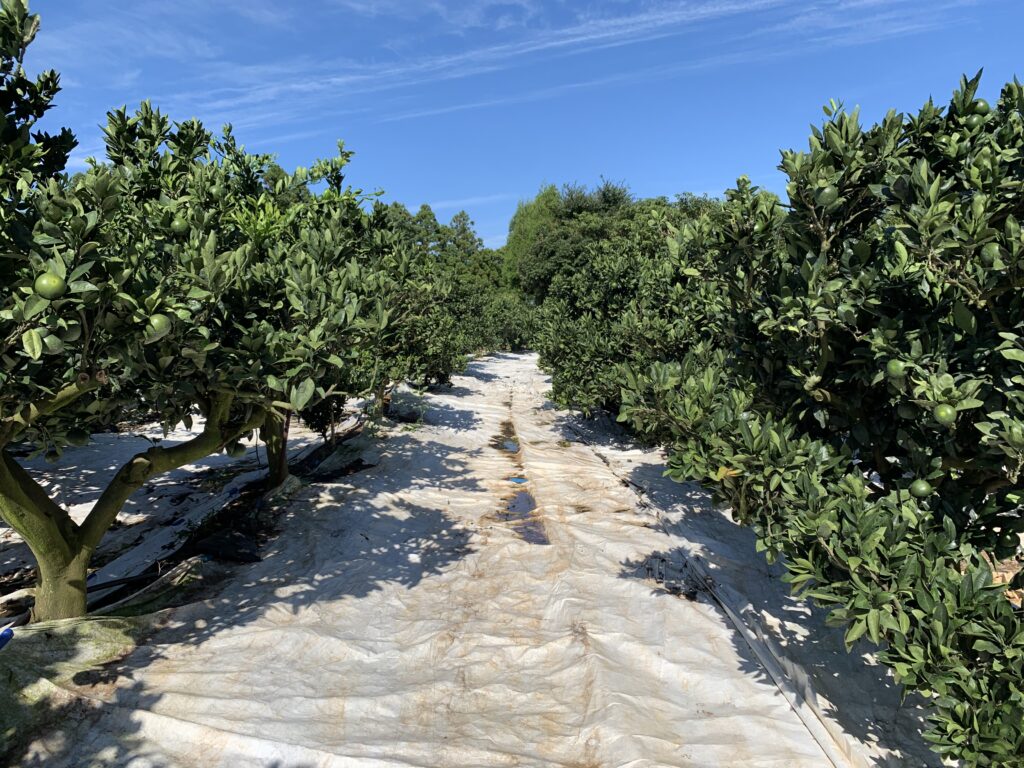
Since mulch cultivation is expected to be so effective, the brand will change when shipped to JA with or without mulch. And of course, the price. Therefore, every year, there is a check to make sure that all the orchard areas are covered with mulch.
Finally, the work begins!
It was a day when JA employees came to help with the mulching work. The JA staff members are dispatched free of charge to growers who request them every year in order to help them with the tough work in the middle of summer. This is a great help to the producers.
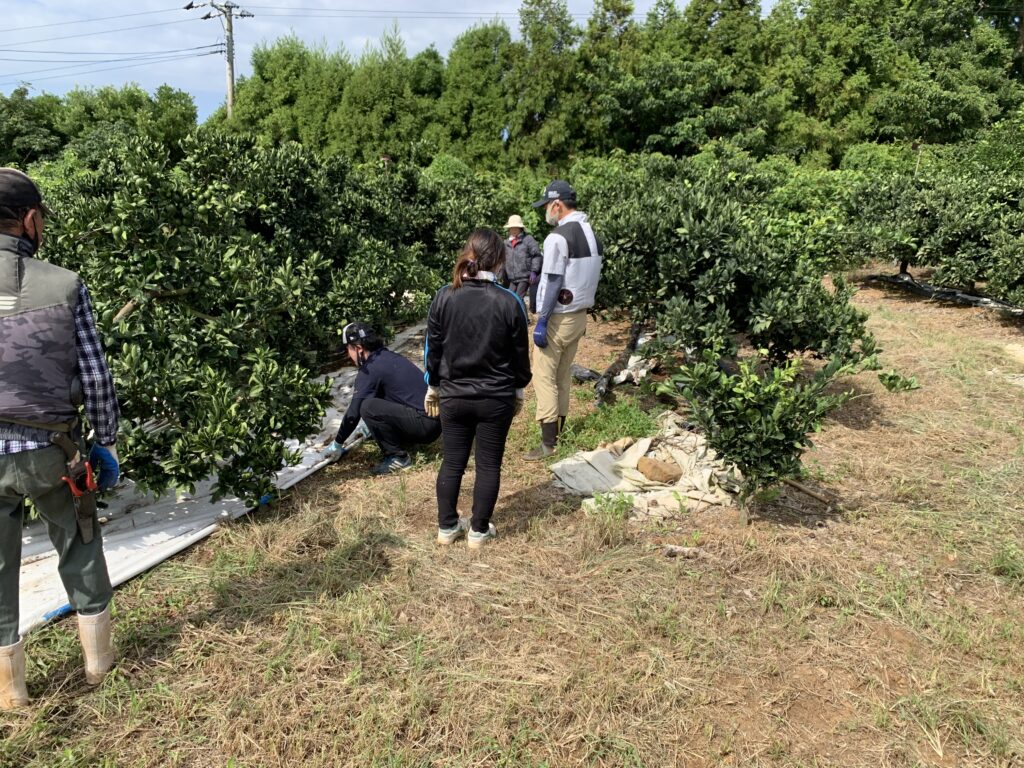
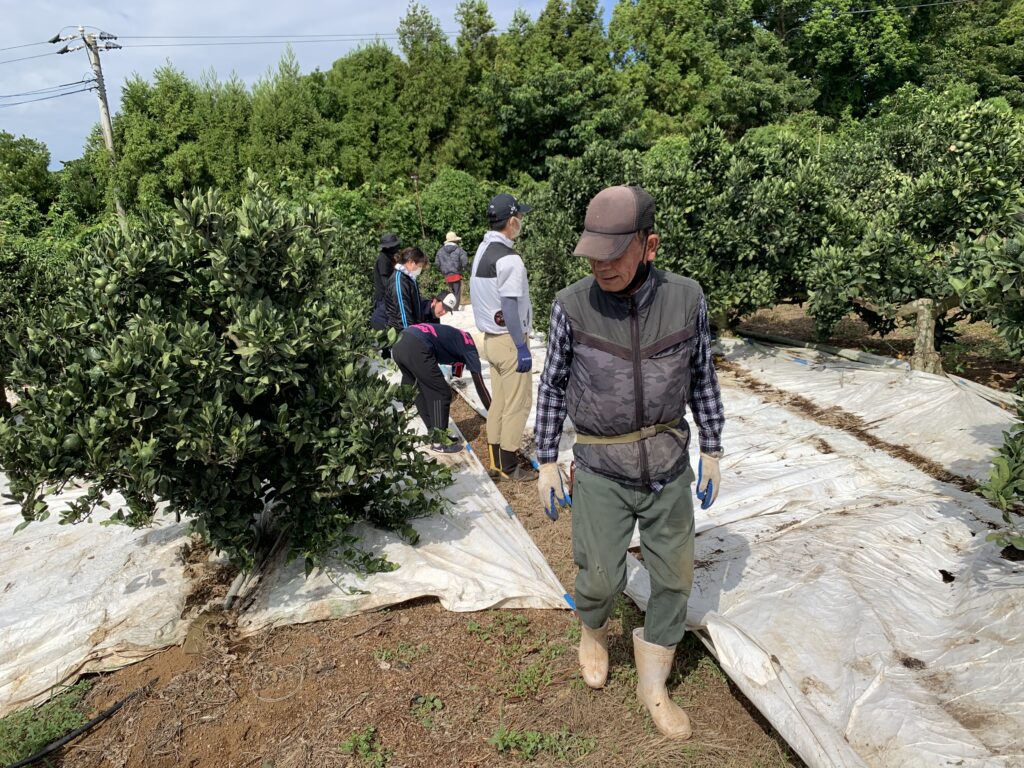
To make the work of mulching easier, Mr. Nakazato’s farm uses a handmade handle to raise and lower the mulch through a pipe.
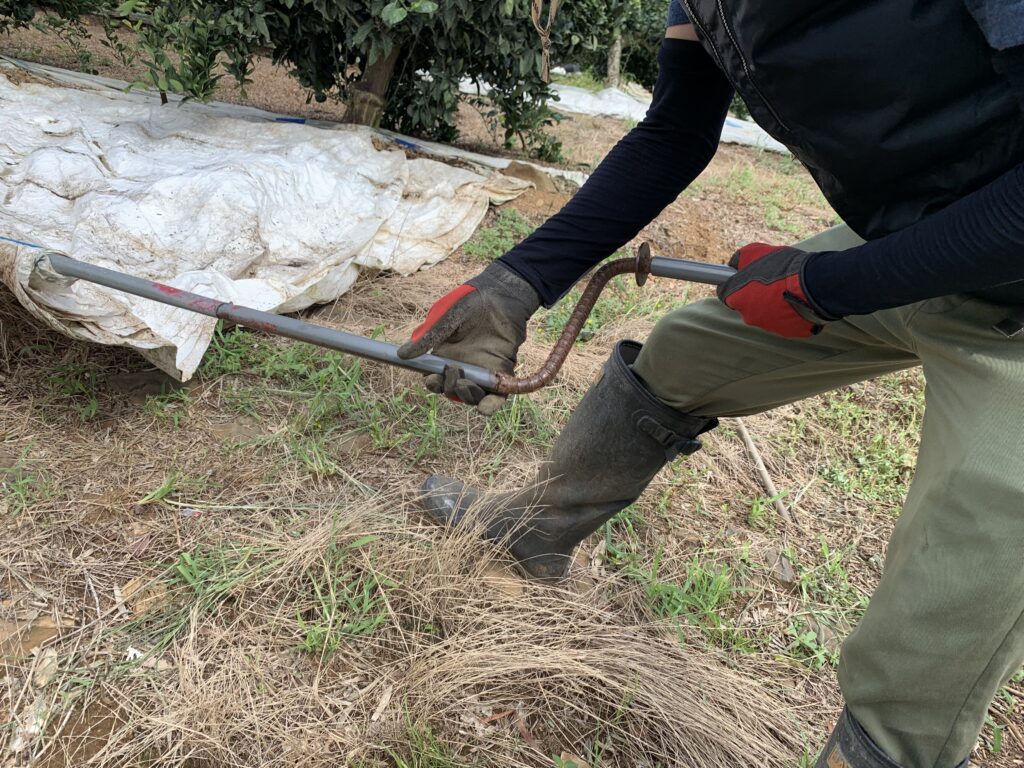
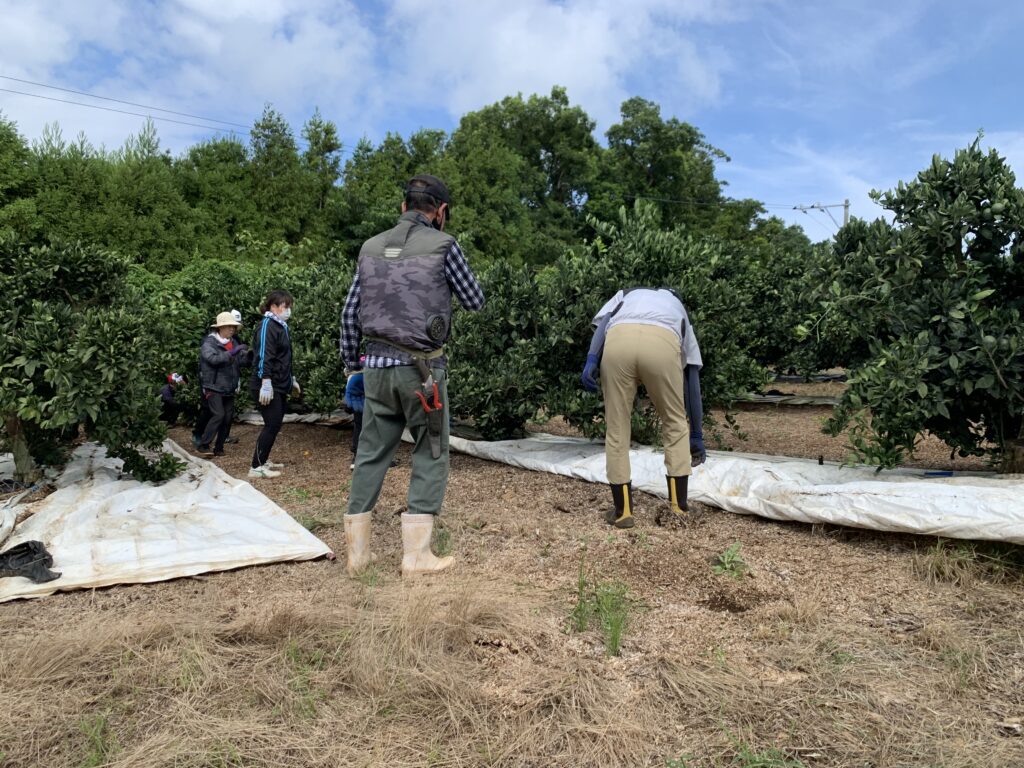
Sheets of more than 50 meters can be raised and lowered at once, but detailed adjustments are made by hand.
Everyone was sweating within 5 minutes of the start of the work since it was done under the hot sun. It took a total of eight people to complete the work that day, which took about two hours.
It would take more than half a day for a family to do it alone, so you can see how grateful we are for the helpers on this day.
After helping out, the JA staff members dashed off to the next site.
summary
So, the mulch tensioning process was successfully completed.
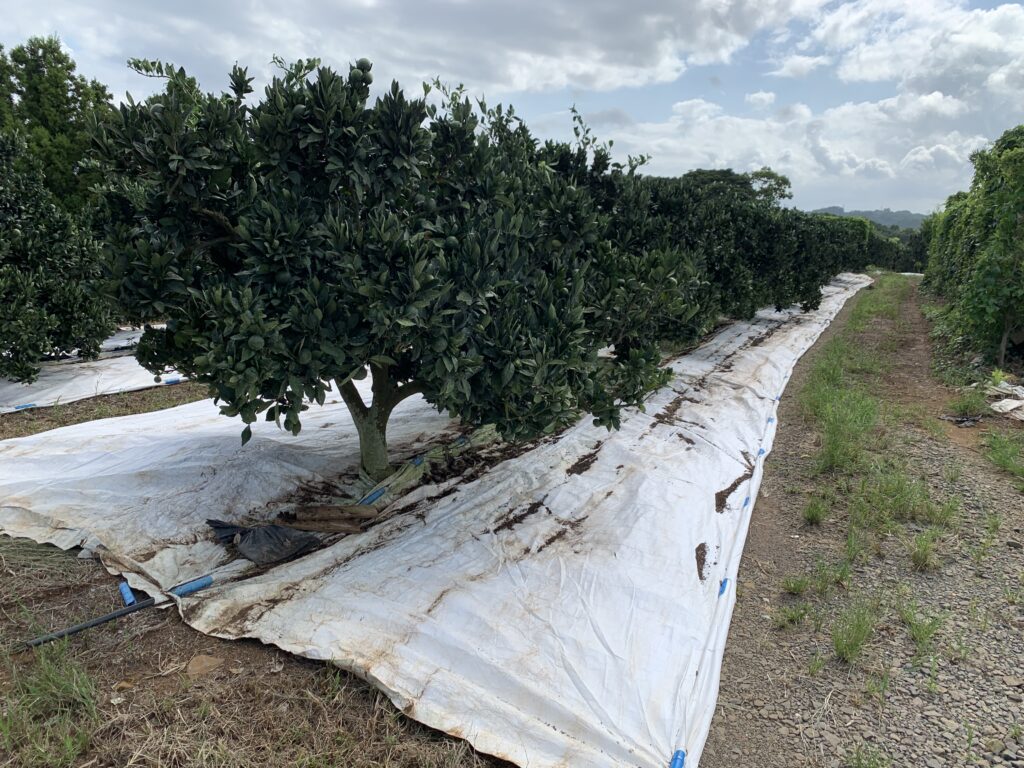
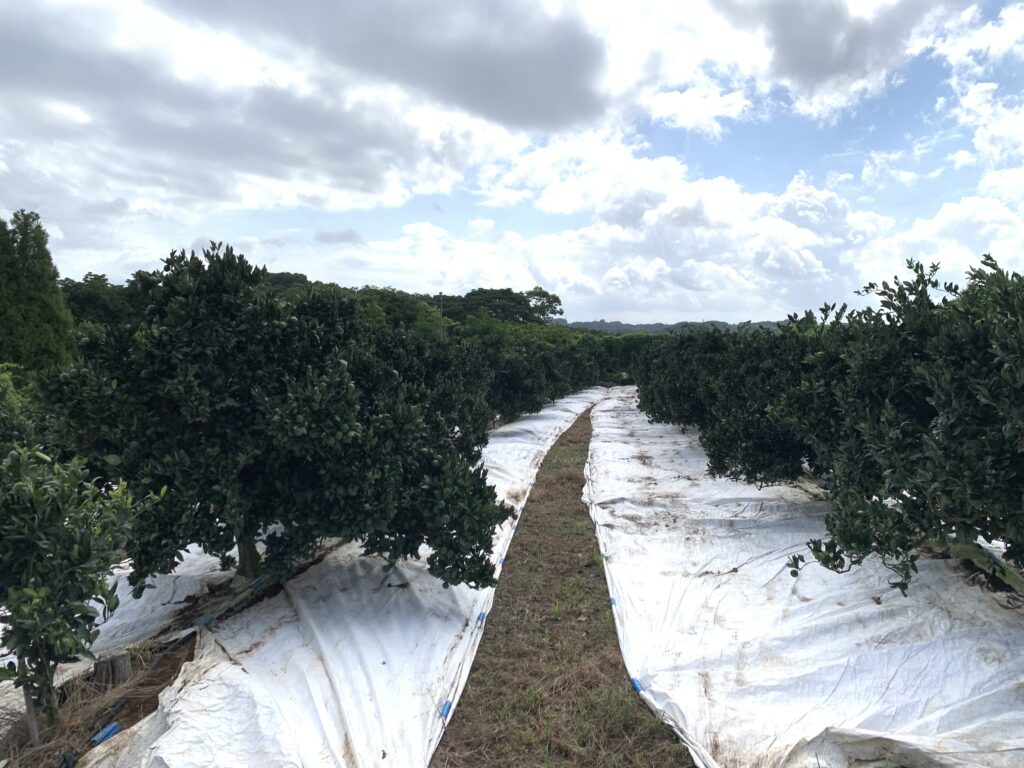
The farmer says that various innovations have made the work much easier. The usual way of spreading out the sheet and placing weights on it is done under the mandarin trees. Under the scorching sun. It is a very harsh summer tradition.
However, it is through such hard work by producers that we, the consumers, are unaware of, that we are able to produce “mikan,” a specialty product of Saikai City that is nationally acclaimed and has many fans.
Everyone enjoys eating delicious mandarin oranges at a kotatsu every winter as a matter of course. Let’s enjoy this Japanese winter tradition again this year.

